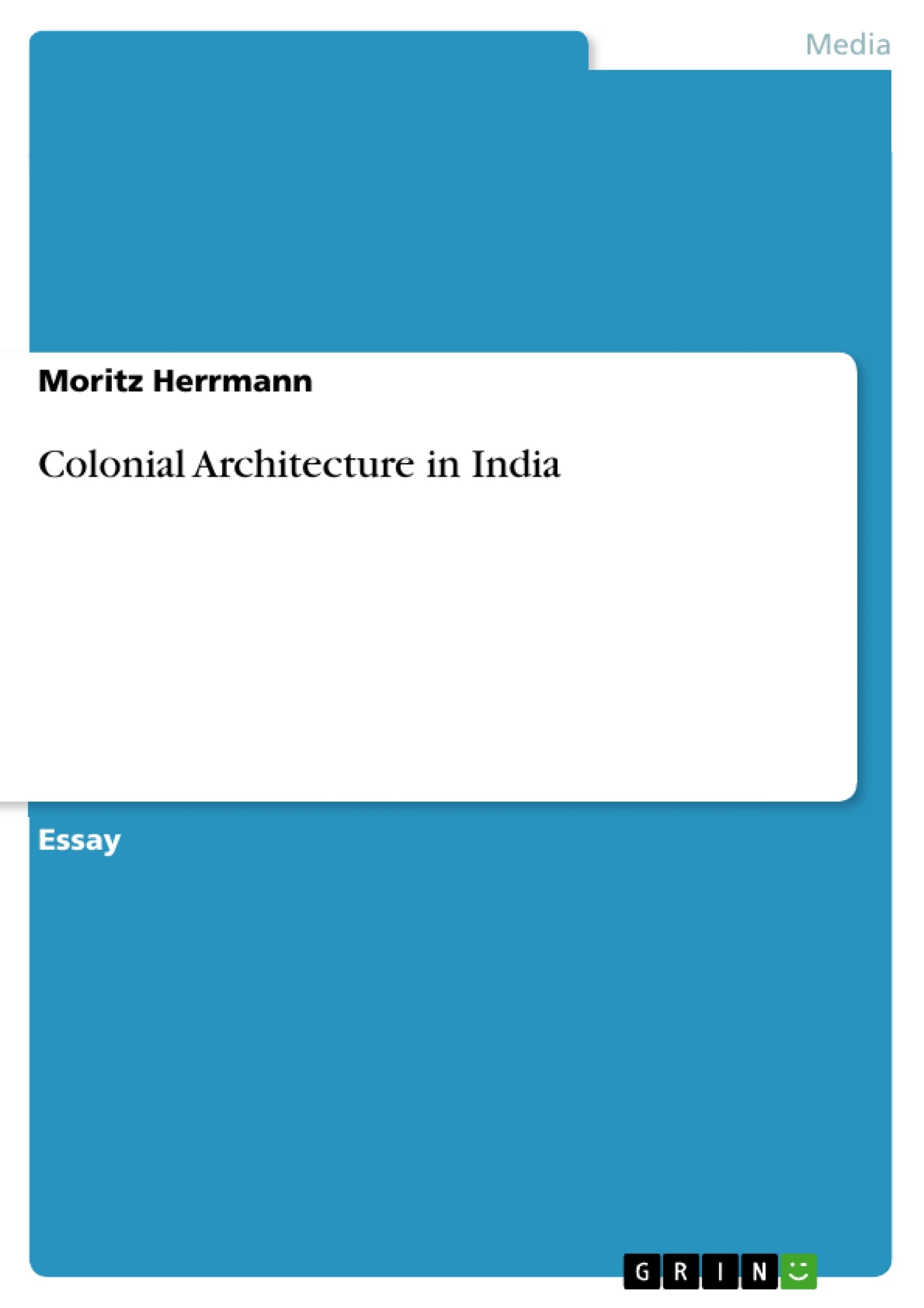Of course, the India of today is also a product of the decade of colonialism in some ways. And although colonial architecture might be just one piece of the puzzle it remains undeniable that its influence is by no means trivial since the output changed Indian landscape. It is fair to say that India has struggled with the colonial heritage in order to find its post-colonial identity. While political experts agree that India has developed dynamically, architecture critics point out architectural development did not quite so – at least not at the same pace. The following essay wants to examine whether this assumption can be explained by the rule colonial architecture. It gives an overview over that very time and its possible meaning for the later, post-colonial architecture of the independent India. It will focus on urban planning, forts and churches.
Inhaltsverzeichnis (Table of Contents)
- Colonial Architecture
- Urban Planning
- Forts
- Churches
- The Colonial Idea of Urban Planning
- Forts
- Churches
Zielsetzung und Themenschwerpunkte (Objectives and Key Themes)
This essay explores the impact of colonial architecture on India, particularly focusing on its influence on urban planning, forts, and churches. It aims to analyze how colonial architecture shaped the landscape of India and influenced the development of its post-colonial architectural identity. The essay also aims to highlight the intricate relationship between colonial influence and local traditions, resulting in a blend of styles and cultural expressions.
- The impact of colonial architecture on the urban landscape of India
- The interplay between colonial design and indigenous architectural traditions
- The role of forts in colonial military power and their architectural significance
- The influence of European architectural styles on churches in India
- The evolution of colonial architecture in India, from early forts to later hybrid styles
Zusammenfassung der Kapitel (Chapter Summaries)
- The essay begins by discussing the concept of colonial architecture, its historical context, and its implications for the cultural identity of colonized nations. It highlights the contrasting forces of colonial imposition and local adaptation in the development of architectural styles.
- The essay then delves into the impact of colonial urban planning in India, focusing on the establishment of new towns and suburbs designed to separate Europeans from the indigenous population. It explores the consequences of these urban planning initiatives, including the demolition of historical areas and the introduction of new architectural concepts.
- The essay examines the role of forts in colonial India, highlighting their strategic significance as military structures and exploring their distinctive architectural features. It examines the interplay of defensive structures, artillery, and polygonal geometries in fort design.
- The essay delves into the influence of European architectural styles on churches in India, tracing their development from early English churches to later Gothic and Indo-Saracenic styles. It explores the architectural features of churches, including airy porticoes, slender steeples, and decorative elements.
Schlüsselwörter (Keywords)
Colonial architecture, urban planning, forts, churches, India, British Raj, European influence, indigenous traditions, Indo-Saracenic, Gothic, Victorian, urban design, military structures, religious architecture.
- Quote paper
- Moritz Herrmann (Author), 2010, Colonial Architecture in India, Munich, GRIN Verlag, https://www.grin.com/document/172827



